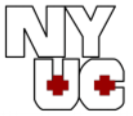In New York City, the way healthcare is delivered is drastically changing. Like many other parts of the country, managed care and market competition are growing in New York.
The change in New York’s significant public policy changes has accelerated the transition to market-oriented health care. The rapidly expanding role of urgent care New York to communities and the primary care infrastructure has resulted from increased competition and quick medical attention to minor injuries.
The hospitals and healthcare facilities in New York City have recently had to deal with significant changes in healthcare financing and policy implemented at the federal, state, and local levels. However, a health delivery system’s two main goals are to make it possible for all citizens to access healthcare when necessary and to provide affordable, high-quality healthcare services.
1) Managed care is a method of providing healthcare that aims to integrate all of its essential components, including mechanisms to regulate the use and cost of medical services.
2) The ten characteristics of the American healthcare system are as follows:
- lack of a centralised regulatory body;
- curative and technology-driven;
- expensive
- imperfect market conditions;
- government subsidies for the private sector;
- fusion of market & social justice;
- multiple players & balance of power;
- quest for integration;
- access based on insurance coverage; and
- legal risks influence practice.
3) Employers typically purchase health insurance plans to safeguard and cover their workers. They do this due to the lack of an all-inclusive, universal healthcare system in the United States.
4) The government heavily influences the American healthcare system. Through the Medicare and Medicaid programmes, they finance the provision of Nassau immediate medical care. The government decides who is eligible to receive services under those programmes and who is not. The government also sets the eligibility requirements for individuals eligible for health services under those programmes. Another factor is that the government has a big say in how much providers are paid for providing services to Medicaid and Medicare patients. These organizations must adhere to the government-created participation standards to provide services to Medicare and Medicaid.
5) Since organizations set prices outside of the market, the US healthcare system is referred to as “imperfect.” The forces of demand do not control them freely.
6) In New York City, nearly three-quarters of emergency room visits in 2000, according to a Commonwealth Fund report, were for non-emergent medical issues that could have been handled in a primary care setting. The report came to the following conclusions: the city’s primary care system needed to be significantly expanded, and there was a need to lower barriers to care for patients with less income and those who don’t have health insurance.
7) Healthcare access is still a problem. Due to the high cost of living in the city, many New Yorkers choose not to purchase insurance. [Reference needed] New Yorkers with low incomes or those without jobs have limited access to high-quality healthcare. The NYC Health + Hospitals programme aims to increase these residents’ access to healthcare.
8) Healthcare disparities were made clear by the pandemic. In Manhattan’s Upper East Side, there were eight times as many primary care physicians as in Elmhurst and Corona before the pandemic or a difference of 27 times. The same Queens communities had a death rate that was six times higher and a COVID-19 infection rate that was four times that of Manhattan’s East Side.
9) According to numerous reports, COVID-19 had a significant negative impact on minority communities in New York City, in part because of these communities’ higher population densities and higher rates of comorbidities. Supply issues were one of the logistical challenges faced by the COVID-19 vaccine early distribution. Despite this, challenges such as a lack of supply, lengthy wait times, and issues with eligibility and registration persisted. As a result of state and local mandates, vaccination rates significantly increased.
10) Over the past ten years, NYC has seen a massive increase in Urgent Care in Queens Village and Nassau County storefronts. They have provided many with a practical way to access care on demand, which was previously a novelty in healthcare, and to avoid costly, time-consuming trips to hospital ERs. COVID has expanded the role of urgent care facilities as significant testing and immunization sites.
An urgent care walk-in clinic in New York with insurance approval, New York Urgent Care is committed to giving our community access to immediate, high-quality healthcare. For non-life-threatening illnesses, our qualified medical staff will offer essential preventive and routine healthcare services.

